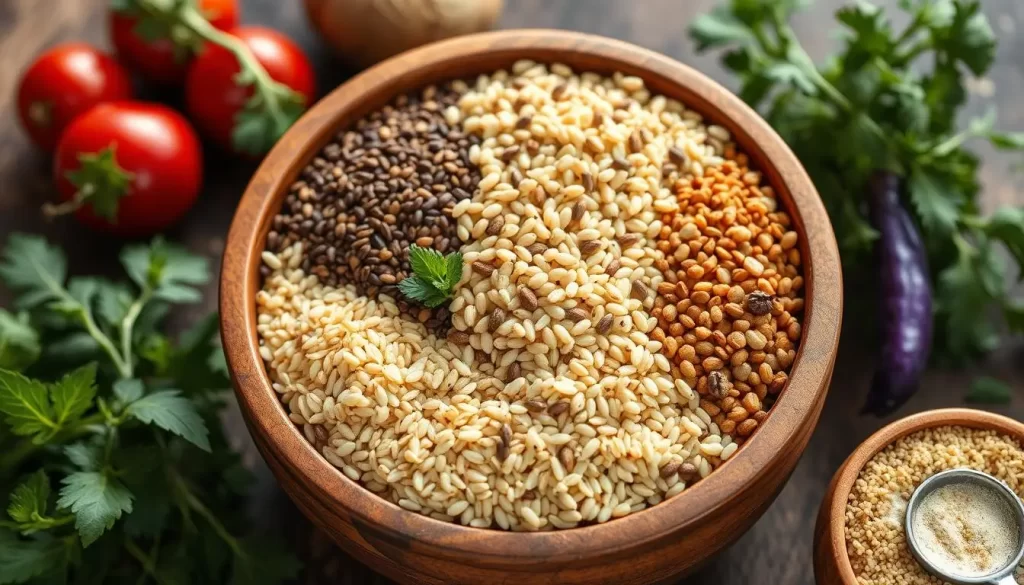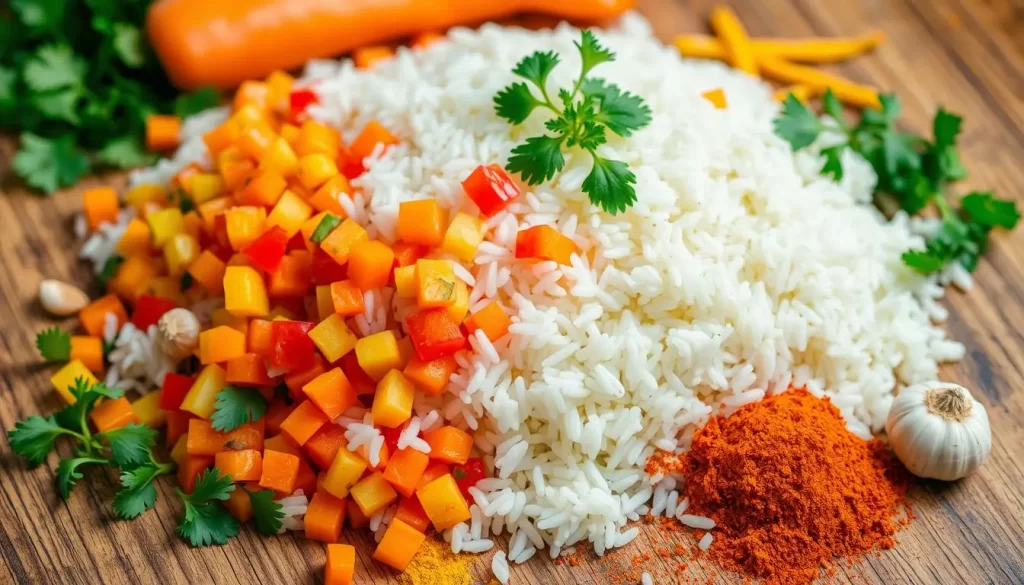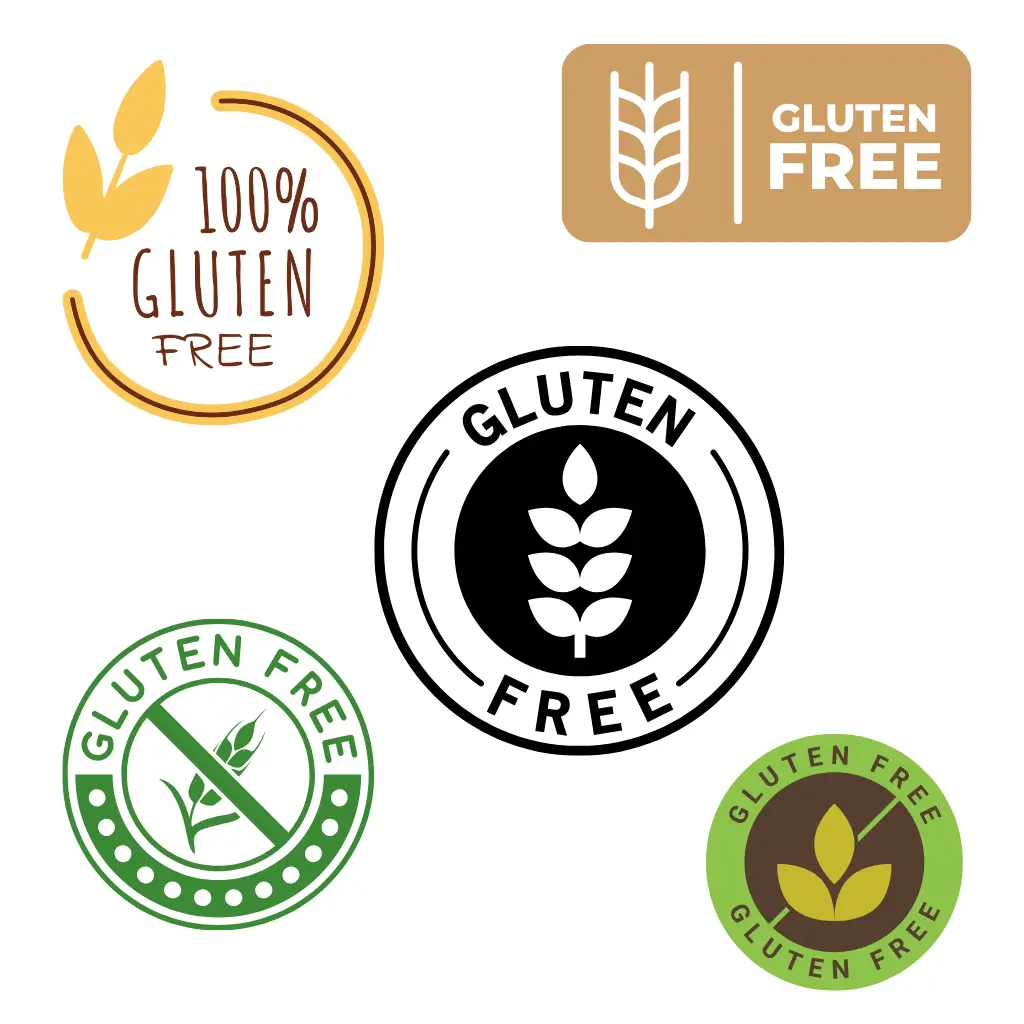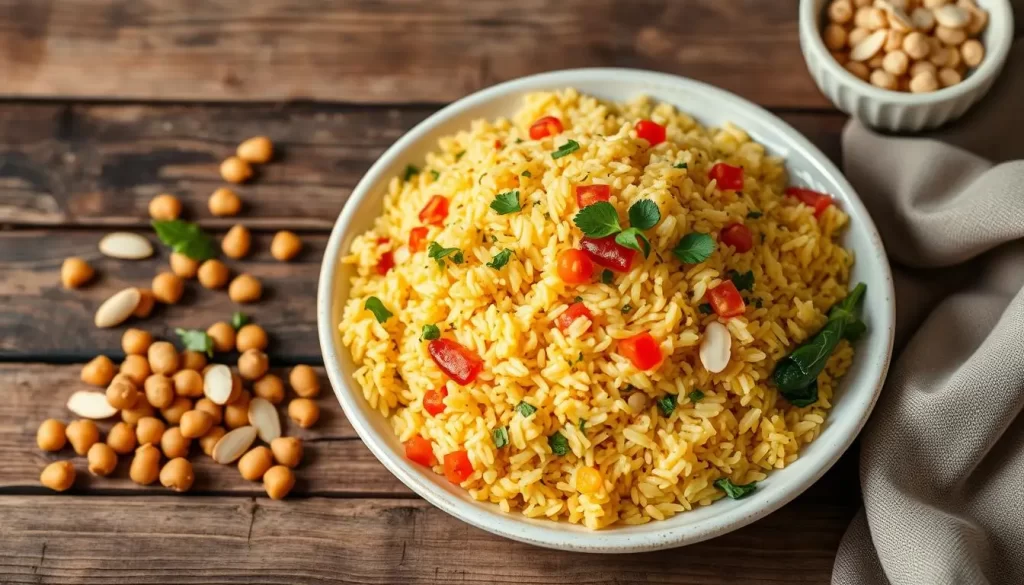Rice pilaf is a tasty and flexible dish that’s often a favorite side. But, if you’re gluten-sensitive or on a gluten-free diet, you might wonder if it’s safe. The main ingredient, rice, is naturally gluten-free. Yet, the recipe and ingredients can change the gluten level in the dish.
We’ll look closely at rice pilaf, including its ingredients and how it’s made. We’ll also check for gluten. By the end, you’ll know if rice pilaf is a gluten-free option for you.
Understanding whether rice pilaf is glutenless opens the door to crafting a meal that’s both safe and delicious for those with gluten sensitivities. Pair your rice pilaf with our rich and satisfying GlutenFree Chicken & Broccoli Cheddar Rice, which offers a hearty and cheesy complement. To start, consider our fresh and vibrant Chicken, Kale & Wild Rice Salad for a nutritious addition. Finish the meal with a subtly sweet treat like our Delicious Gluten-Free Cranberry Bread, perfect for rounding out the flavors.
Table of contents
Understanding Gluten and Its Sources
Gluten is found in grains like wheat, barley, and rye. It gives bread and other foods their shape and texture. But, gluten can be hard to digest because of its high proline content. About 13% of the world’s people have gluten sensitivity, making it key to know where gluten comes from.
What Is Gluten?
Gluten makes dough elastic, helping it rise and keep its shape. While it’s not bad for most, it can harm those with celiac disease, gluten sensitivity, or wheat allergies. A gluten-free diet is needed to avoid damage and allergic reactions.
Common Gluten Sources
- Bread, pasta, and cereals
- Baked goods, such as cakes, cookies, and pies
- Beer and other malt-based beverages
- Soy sauce and certain processed foods
Why Gluten-Free Matters
For those with gluten-related health issues, a gluten-free diet is vital. Gluten can cause an autoimmune reaction in celiac disease, leading to intestinal damage. It can also cause bloating, diarrhea, and malnutrition. Gluten sensitivity can lead to stomach pain, joint issues, and neurological problems.
Knowing where gluten is and choosing gluten-free options is key for health. Exploring gluten-free grains like rice, corn, and quinoa opens up tasty and healthy choices for those with gluten sensitivities.

Rice Pilaf: Ingredients and Preparation
Making a tasty rice pilaf starts with knowing the right ingredients and how to prepare them. Classic recipes use a mix of rice, oil or butter, onions, garlic, and spices. These ingredients create a flavorful dish.
Base Ingredients in Traditional Rice Pilaf
- Long-grain rice, like Basmati or jasmine, for a light texture
- Butter or oil to sauté the aromatics and toast the rice
- Onions and garlic for a savory base
- Spices like cumin, cardamom, turmeric, and cinnamon for depth
Variations and Additions
While the core ingredients stay the same, you can add your own twist. Here are some common extras:
- Vegetables like carrots, peas, or bell peppers for color and texture
- Herbs such as parsley, cilantro, or dill to add freshness
- Proteins like chicken, lamb, or shrimp for a more filling meal
- Dried fruits or nuts for a sweet and crunchy contrast
Cooking Methods
The secret to a great rice pilaf is in how you cook it. First, sauté the rice in oil or butter. Then, add broth to cook the rice until it’s tender. This method keeps the rice grains separate and fluffy.
Letting the rice rest for 5-10 minutes before serving helps it stay fluffy. Fluffing it with a fork just before serving makes sure each grain is perfect.

Assessing Gluten in Rice Pilaf
Rice is naturally gluten-free. But, gluten can get into your rice pilaf through cross-contamination. This can happen during harvesting, processing, or packaging. Some mixes might have gluten in them, like orzo or flavorings.
To make sure your rice pilaf is glutenless, check the ingredients. Look for labels that say “certified gluten-free.”
Cross-Contamination Risks
Cross-contamination is a big worry for those on a gluten-free diet. Gluten can get into rice during transport, storage, or shared facilities. This risk is higher with bulk bin rice.
Testing for Gluten-Free Ingredients
When picking your rice pilaf ingredients, read the labels carefully. Look for “gluten-free” or “certified gluten-free” labels. Stay away from products with wheat, barley, rye, or other gluten grains.
If you’re eating out, ask about the rice pilaf’s ingredients and how it’s made. This ensures it’s safe for you to eat.
Certified Gluten-Free Labels
For the best assurance, choose products with certified gluten-free labels. These labels mean the product has been tested and has less than 20 parts per million of gluten. This meets the FDA’s gluten-free standard.
This certification gives you peace of mind. It lets you enjoy a glutenless rice pilaf without worry.

“Celiac disease affects over 3 million people in the United States, and more than 70% of individuals with celiac disease report feeling better within two weeks of starting a gluten-free diet.”
By watching for gluten-free certification and checking ingredients, you can keep your rice pilaf safe and tasty. It’s a key part of a gluten-free lifestyle.
Nutritional Benefits of Rice Pilaf
Rice pilaf is a great choice for those looking for a glutenless meals. Rice, the main ingredient, is full of complex carbs for lasting energy. Brown rice, in particular, has more fiber and nutrients than white rice.
Rice as a Healthy Grain Choice
White rice, often used in pilaf, has about 242 calories per cooked cup. It has 4.4g of protein and 53.4g of carbs. It’s also gluten-free, which is good for those with gluten issues. Fortified white rice may also have extra nutrients, adding to its health benefits.
The Role of Additional Ingredients
Adding veggies, lean proteins, and herbs to rice pilaf makes it even better. These ingredients add vitamins, minerals, and more protein. For example, adding bell peppers, onions, and ground meat can make the pilaf more nutritious.
Comparing Rice Pilaf to Other Dishes
Rice pilaf is a great part of a gluten-free diet, offering variety and important nutrients. It’s quick energy, perfect for active people and athletes. It’s also safe for those with many food allergies or intolerances, as it can be tailored to different diets.

“Rice pilaf, especially with whole grain rice, is a good source of complex carbs, fiber, and essential vitamins and minerals.”
Tips for Making Gluten-Free Rice Pilaf at Home
Making a tasty glutenless rice pilaf at home is simple. Start by picking certified gluten-free rice, like long-grain white or basmati. This ensures your base ingredient is safe. Be careful with other ingredients, choosing gluten-free options like tamari instead of soy sauce.
Choosing Safe Ingredients
To make your rice pilaf gluten-free, watch every ingredient closely. Stay away from pre-seasoned rice mixes or boxed rice products, as they might have gluten. Use fresh herbs, spices, and vegetables that are gluten-free to create your flavor.
Simple Substitutions
If a recipe uses gluten-containing ingredients, like breadcrumbs or pasta, swap them out. Use quinoa, millet, or crushed gluten-free crackers for a similar texture and taste. These easy changes let you enjoy rice pilaf without worrying about gluten.
Flavoring Your Rice Pilaf
Make your gluten-free rice pilaf even better by trying different flavors. Add fresh herbs like parsley, cilantro, or oregano, or squeeze in some lemon or lime juice. For a savory flavor, sauté onions, garlic, and veggies before adding the rice and broth. You can create a delicious and glutenless rice pilaf at home with endless possibilities.
FAQ
Is rice pilaf gluten-free?
Rice pilaf is usually gluten-free because it’s made with rice. But, always check the recipe or ingredients list. Some might include gluten in seasonings, broths, or grains.
What makes rice pilaf gluten-free?
Rice pilaf is gluten-free because it’s made with rice. The cooking method, like sautéing in oil or butter, makes it fluffy and separate.
What are the potential gluten sources in rice pilaf?
Gluten can come from orzo, some seasonings, broths, or grains. Always read labels and pick gluten-free products to keep it safe.
How can I ensure my rice pilaf is gluten-free?
Use glutenless rice and broth to make sure your pilaf is safe. Be careful in your kitchen to avoid gluten. Choose gluten-free alternatives like tamari instead of soy sauce. Always check labels for “gluten-free” or “certified gluten-free.”
What are the nutritional benefits of gluten-free rice pilaf?
Gluten-free rice pilaf is good for you because it has complex carbs for energy. Brown rice has more fiber and nutrients than white. Adding veggies and lean proteins makes it even better, with vitamins, minerals, and protein.
Can rice pilaf be part of a gluten-free diet?
Yes, rice pilaf is a great choice for a gluten-free diet. It’s nutritious, offers variety, and can be a main dish or side. Just make sure to use gluten-free ingredients.





